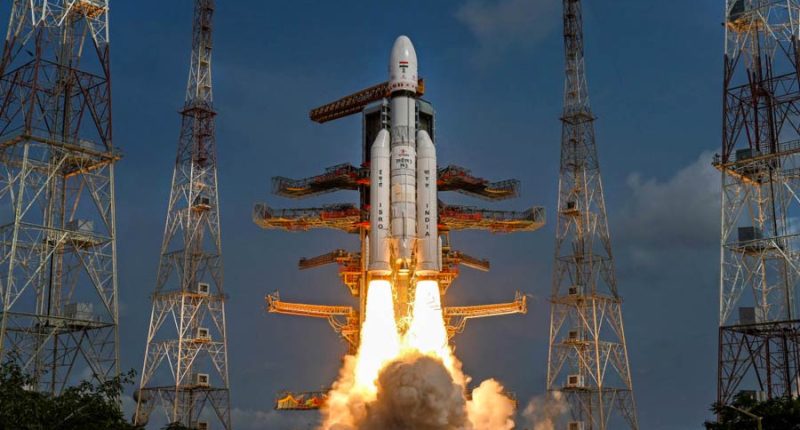The launch date of the Chandrayaan-3 mission has officially been announced. In a tweet thread on threads (lets get used to it now), the Indian Space Research Organisation (ISRO) revealed that the country’s ambitious lunar mission is set to take off on July 14, achieving liftoff from the Satish Dhawan Space Centre in Sriharikota at 2:35 PM, in a move that is set to demonstrate India’s capabilities in the field of space exploration. This development comes even as the space agency successfully integrated the Chandrayaan-3 spacecraft with the Launch Vehicle Mark-III (LVM3) at the same venue.
Chandrayaan-3 was originally set to launch on July 13, but later, the launch was rescheduled 24 hours later. In case the launch does not take place on July 14, it is likely to be moved to a back-up date until July 19. It comprises of a propulsion module and a lander/rover, which is similar to the Vikram rover on Chandrayaan 2 (even though it will come with improvements to help ensure a safe landing and to prevent it from meeting the same fate as its predecessor). The propulsion module is set to bring the lander/rover into a 100 km circular polar lunar orbit before it separates.
Announcing the launch of Chandrayaan-3:
🚀LVM3-M4/Chandrayaan-3 🛰️Mission:
The launch is now scheduled for
📆July 14, 2023, at 2:35 pm IST
from SDSC, SriharikotaStay tuned for the updates!
— ISRO (@isro) July 6, 2023
The Launch Vehicle Mark-III (LVM-3) has been chosen as the launch vehicle for the mission. Being the most powerful rocket developed by ISRO to date, it has a lift-off mass of 640 tons. Once the spacecraft has been launched into lunar orbit, it will commence the landing approach on the moon’s surface. Once it lands at the designated lunar site (near the South Pole of the moon) and deploys the rover to the surface, the rover will conduct in-situ chemical analysis of the lunar surface, including studies on the moon’s thermophysical properties, lunar seismicity, lunar surface plasma environment and elemental composition.
The rover’s in-situ chemical analysis is set to provide valuable insights into the lunar environment, offering scientific data that could contribute to future space missions and potentially unlock new discoveries about the Moon’s formation and evolution. Overall, lander and rover are designed to operate for about 14 Earth days.
With its objective to achieve a soft landing on the Moon’s surface, this mission represents India’s continued pursuit of space exploration and technological advancement. Marking the third instalment of the Chandrayaan series and the second attempt by the South-Asian country to achieve a soft landing on the lunar surface, Chandrayaan-3 comes with a lander and rover and holds great potential to deepen humanity’s understanding of the Moon’s surface and its composition.
A successful mission will be all the more significant since the mission’s predecessor – the Chandrayaan-2 – failed after the Vikram lunar lander crashed on lunar surface. That mission had achieved liftoff on July 22, 2019, and the crash occurred on September 6, 2019. Nonetheless, Chandrayaan 2 will be used as a backup relay for the mission.
A successful mission is also likely to propel India into a strong position, especially since only three countries have successfully landed spacecraft on the surface of the moon to date. No one has done that on the dark side of the moon yet.





